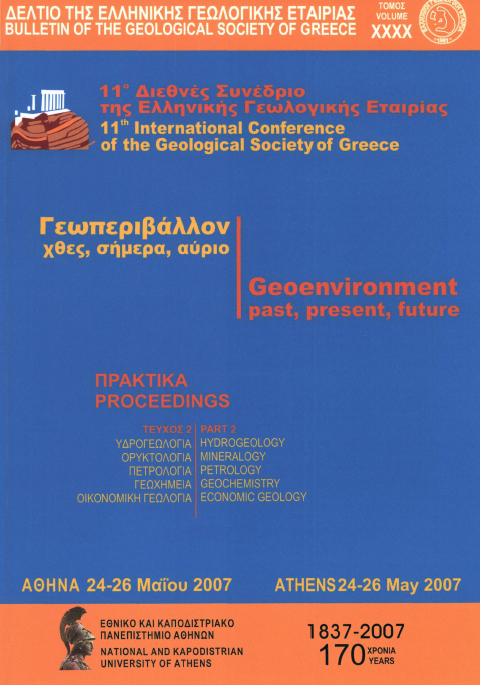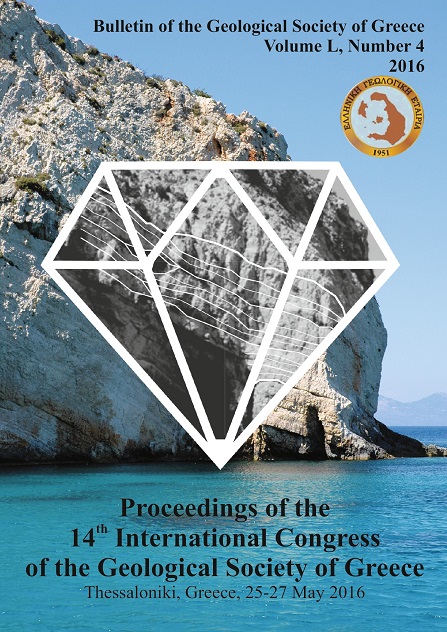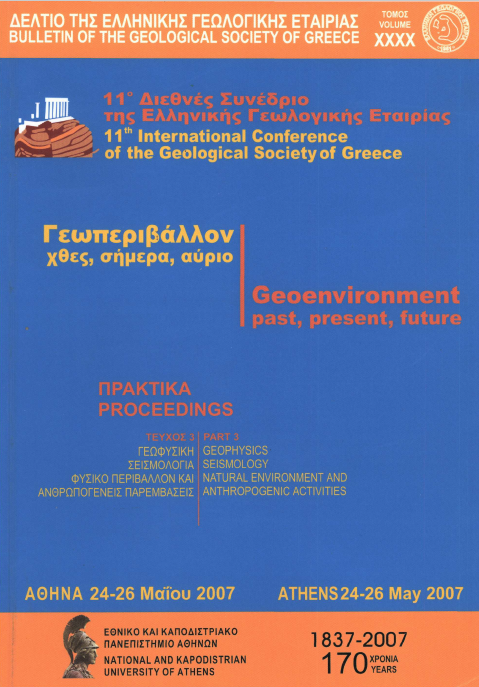PLAGIOGRANITIC ROCKS OF EVROS OPHIOLITE, NE GREECE

Abstract
Dykes or small stocks of plagiogranitic rocL· occur below the extrusive sequence and in mutually interpenetrating association with the sheeted dyke complex of the Evros Ophiolite, NE Greece. They are classified as tonalités, low silica trondhjemites (LST) and high silica trondhjemites (HST). Pétrographie and geochemical data suggest they resemble oceanic plagiogranites ofSSZ origin. Their normalized rock/ORG diagrams reveal ORG compatible element values, slightly depleted relative to ORG incompatible elements and Ba, Ta and Nb negative anomalies. Plagiogranites also show subparallel, relatively flat REE patterns with variable Eu anomaly. As such geochemical features are also found in the dacitic to rhyodacitic lavas of Evros Ophiolite, it is assumed that plagiogranitic melts, especially of LST composition, presumably fed them. As a first approximation to plagiogranites origin, it is suggested tonalité and HST could have been generated by 5-15 % partial melting of oceanic gabbros, whereas LST may possibly derive by fractional crystallization of a MORB type source. In a later stage, intense hydrothermal metamorphism affected the plagiogranites causing formation of peculiar epidositic spherical clots and veinlets
Article Details
- How to Cite
-
Magganas, A. (2007). PLAGIOGRANITIC ROCKS OF EVROS OPHIOLITE, NE GREECE. Bulletin of the Geological Society of Greece, 40(2), 884–898. https://doi.org/10.12681/bgsg.16742
- Section
- Mineralogy-Petrology-Geochemistry-Economic Geology

This work is licensed under a Creative Commons Attribution-NonCommercial 4.0 International License.
Authors who publish with this journal agree to the following terms:
Authors retain copyright and grant the journal right of first publication with the work simultaneously licensed under a Creative Commons Attribution Non-Commercial License that allows others to share the work with an acknowledgement of the work's authorship and initial publication in this journal.
Authors are able to enter into separate, additional contractual arrangements for the non-exclusive distribution of the journal's published version of the work (e.g. post it to an institutional repository or publish it in a book), with an acknowledgement of its initial publication in this journal. Authors are permitted and encouraged to post their work online (preferably in institutional repositories or on their website) prior to and during the submission process, as it can lead to productive exchanges, as well as earlier and greater citation of published work.





